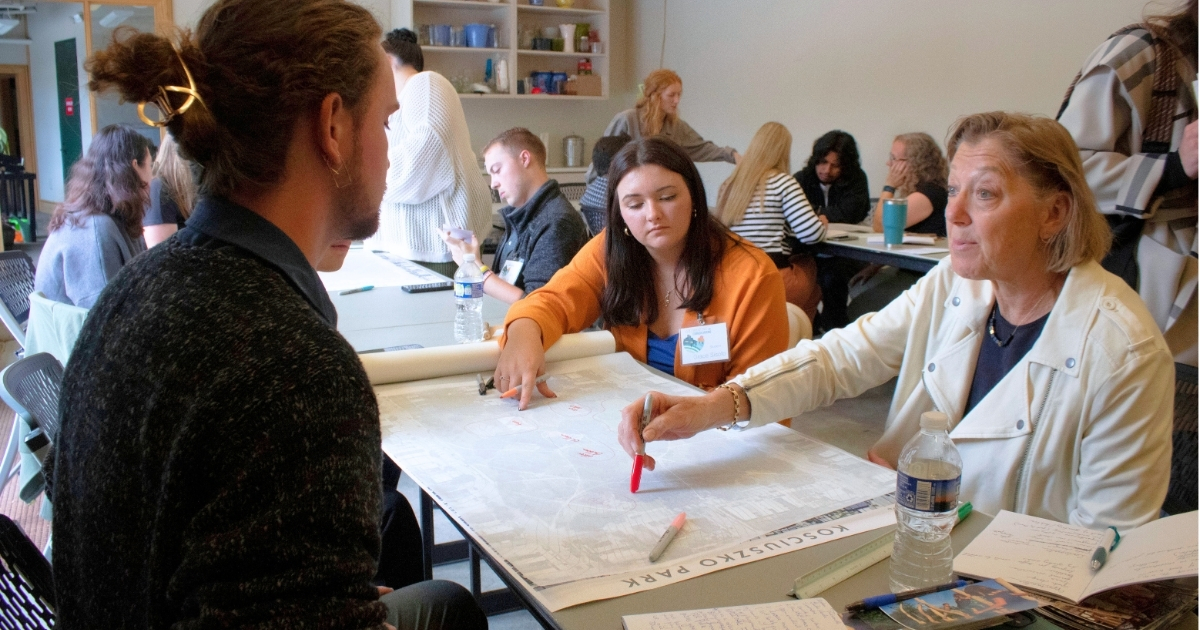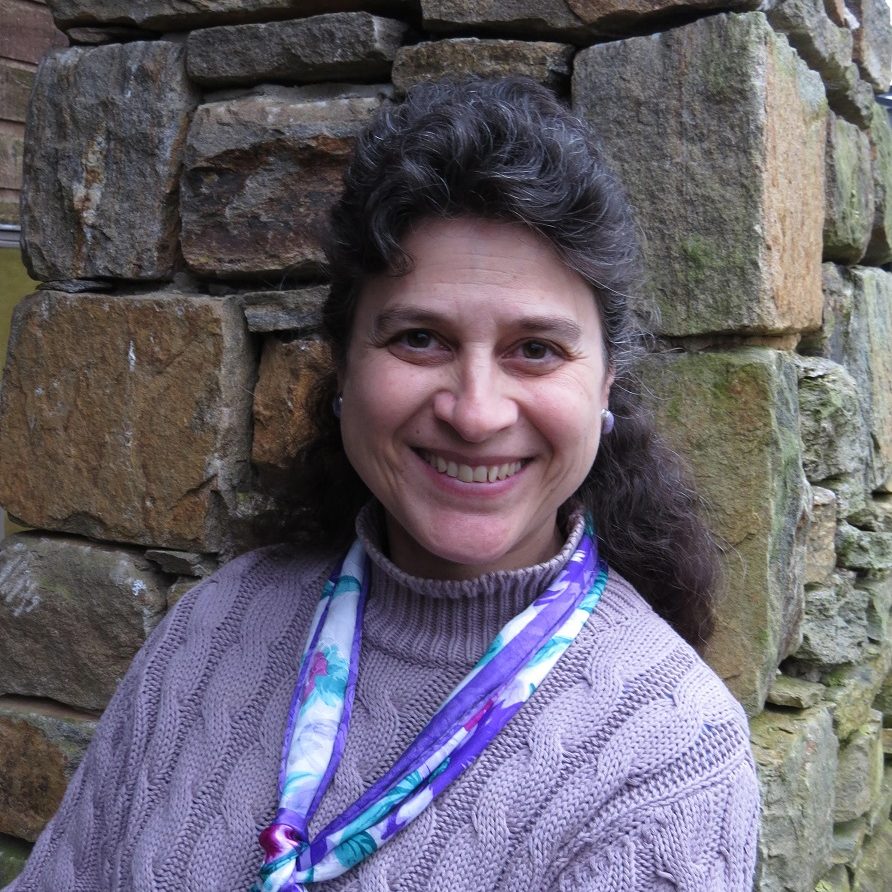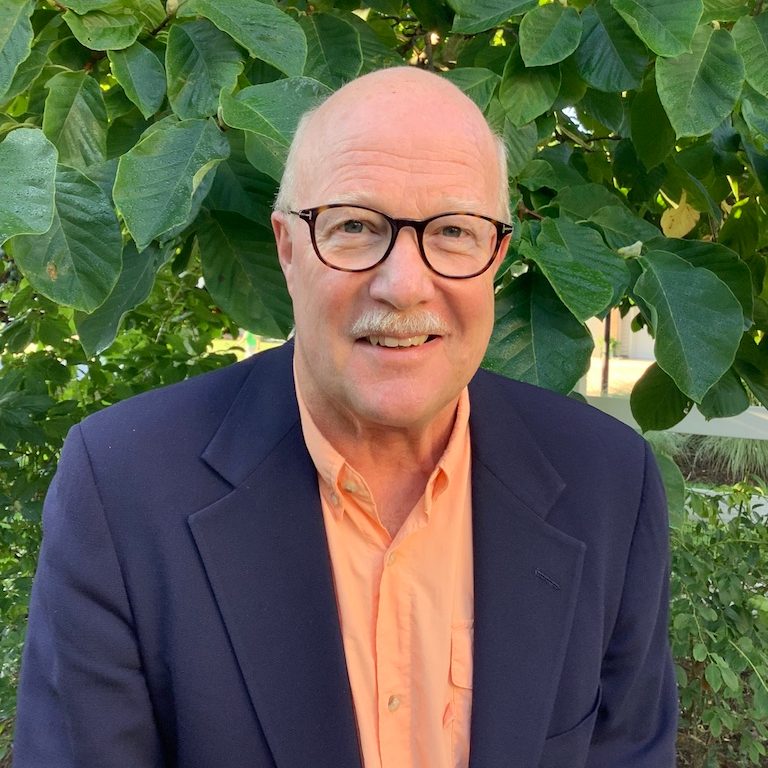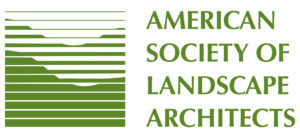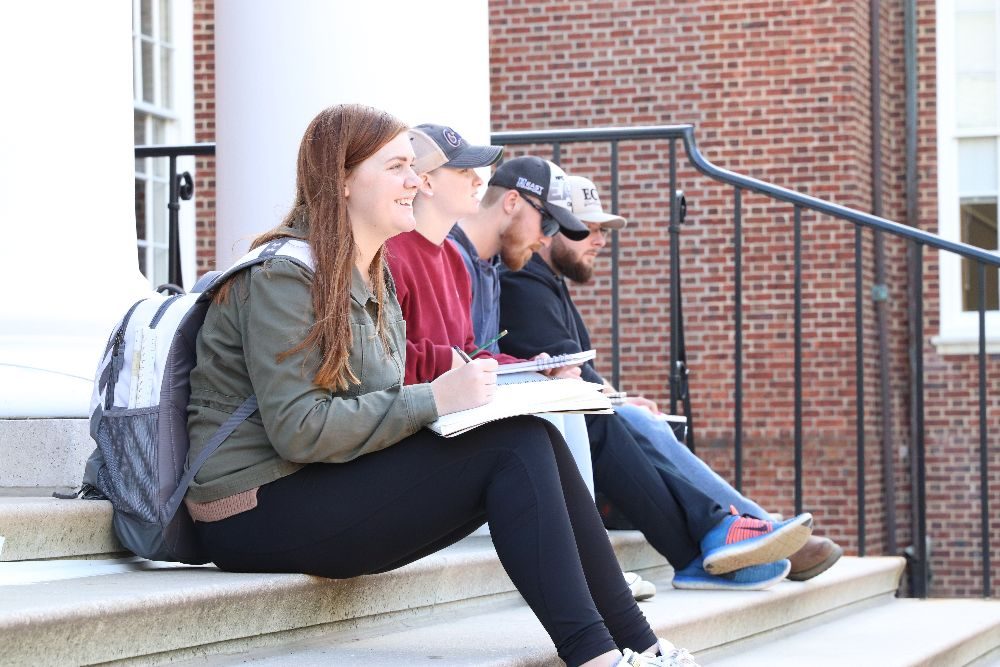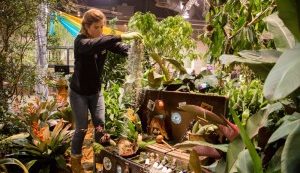
Landscape Architecture major
The Bachelor of Landscape Architecture (BLA) at the University of Delaware is a professional degree program that provides undergraduate students with specific competencies for leadership within the profession of landscape architecture including the knowledge, skills and abilities required for successful practice.
Key subject areas include plants and ecosystems; communications; site design and engineering; design, planning and management; public policy and regulations; computer applications; natural and cultural systems; sustainability; history, theory and criticism; professional practice; professional values and ethics; creative problem solving, art, business, math and science.
The landscape architecture major at the University of Delaware evolved from the Plant and Soil Sciences (PLSC) Department’s long established and respected landscape horticulture and design program.
From 2006-2012, many faculty members had been working to establish a Master’s program in landscape architecture, but in 2012 Dean of the CANR Mark Rieger commissioned a focused educational survey which suggested that a Bachelor’s program was more feasible than a Master’s program. The conversation promptly switched to the creation of a Bachelor’s program instead of a Master’s.
In April 2015, Dr. Jules Bruck convened a focus group of professional landscape architects for a one-day workshop to help establish a relevant curriculum for a new Bachelor of Science Landscape Architecture (BSLA) program. After the curriculum was developed, the program proposal was sent to the University and approved by the faculty senate in the spring of 2016.
That following September, the BSLA program, a First-Professional Degree Program, accepted its first class of 24 students and has been expanding its size and scope ever since. In 2020, the degree was changed to a Bachelor of Landscape Architecture (BLA) and the program earned its initial six-year accreditation in December.
The BLA program has five faculty dedicated to advisement. Each year, one faculty member takes a new cohort and mentors all the individuals in that cohort for the duration of their university experience.
It is the preference of the BLA program that students use a PC system, as this is the platform used to teach introductory computer-aided design and is the platform required to run most of the software used in subsequent BLA courses. Learn about computer requirements for the BLA major.
Please email Dr. Eric Bardenhagen with any questions.
1. Advocacy: The articulation of personal values and ethics related to evidence-based facts to persuade and educate others in the practice of sustainable landscapes.
2. Communications
a. Oral Communication: Clearly conveying information and ideas through speech to a variety of individuals or groups in a manner that engages the audience and helps them understand and retain the message.
b. Written Communication: Clearly expressing ideas in writing using different writing technologies and mixing texts, data, and images.
c. Visual Communication: Clearly conveying and communicating visual information and ideas using two- or three-dimensional physical products or digital media.
3. Design Skills: The ways of thinking that support thoughtful, creative, and imaginative learning facilitated through the development of design thinking mindsets and the practice of high-quality craftsmanship.
4. Clarity of Concept: The expression of a big design idea, articulated in simple terms, recognizable as a thread through multiple design iterations.
5. Problem-Solving: The use of divergence and convergence throughout a process that includes locating a challenge or problem, gathering data, clarifying the problem, generating alternatives, recommending appropriate solutions, and developing a plan of action for implementation.
The University of Delaware's Bachelor's of Landscape Architecture program is accredited.
In recognition of the impact of the landscape architecture profession on public health, safety, and welfare, states regulate landscape architectural practice through licensure. Founded in 1899, the American Society of Landscape Architects (ASLA) is the professional association for landscape architects in the United States, representing more than 15,000 members. Landscape architects lead the planning, design, and stewardship of healthy, equitable, safe, and resilient environments. The Society’s mission is to advance landscape architecture through advocacy, communication, education, and fellowship.
The Landscape Architectural Accreditation Board (LAAB) is vested with its authority by the ASLA Board of Trustees to develop and promulgate the accreditation standards, rules, and procedures for conducting the accreditation process. Accreditation is a non-governmental, voluntary system of self-regulation. Its core is the concept of self-evaluation. The LAAB accreditation process evaluates each program on the basis of its stated objectives and compliance to externally mandated minimum standards. The program conducts a self-study to evaluate how well it is meeting its educational goals. The LAAB then provides an independent assessment, which determines if a program meets accreditation requirements. Programs leading to first professional degrees at the bachelor’s or master’s levels in the United States are eligible to apply for accreditation from the LAAB.
The University of Delaware's Bachelor's of Landscape Architecture program is accredited and meets the educational requirements for licensure in all 50 states and the District of Columbia. Most states require 2-4 years of experience under a licensed landscape architect and successful completion of the Landscape Architecture Registration Examination. You can check ASLA's website for license requirements for each state (look up each state here).
The landscape architecture faculty conduct research in a wide variety of areas.
Instructor of Plant Materials and Landscape Architecture
Athey is a registered landscape architect with experience in residential design, land use, and transportation planning. She teaches Herbaceous Landscape Plants, Woody Landscape Plants and co-teaches Ecological Planting Design Studio and Botany I Lab. She is especially interested in habitat design and sustainable landscapes. For the Delaware Nature Society, she coordinates the annual native plant sale, and is a member of Delaware’s Native Species Commission.
Professor of Plant Biology
Dr. Bais's rhizosphere biology research is focused on understanding the biological significance of root exudation. Root-root, root-microbe, and root-nematode communications are continuous occurrences in the rhizosphere, but due to the underground nature of roots, these intriguing interactions have largely been overlooked. His lab research is taking a multidisciplinary approach by interfacing plant biology and chemistry to unravel the underground communication process.
Associate Professor of Water Resource Engineering
Dr. Balascio works in the areas of low-impact development, stormwater management, urban hydrology, and hydrologic modeling. Dr. Balascio works to manage the cycles of water, the problems caused by storm water, and the quality of water in urban areas in conservative ways that affect the ecosystems in the least intrusive fashion. Dr. Balascio also researches the assessment of problem-based student learning and teaching with technology.
Associate Professor of Landscape Architecture
Dr. Bardenhagen is an Associate Professor of Landscape Architecture who teaches "The Built Environment Studio," which is an introduction to principles involved in the design and installation of landscape elements: stone, brick, concrete, wood and metal.
Professor and Extension Specialist, Ornamental Horticulture
Dr. Barton investigates roadside vegetation management strategies that enhance the environment, are aesthetically pleasing, and economically sound. She promotes sustainable landscape practices through a variety of publications in the Plants for a Livable Delaware series, series of brochures that educates Delawareans on plants that will easily survive in Delaware’s climate, help build more healthy ecosystems, and not become invasive species.
Chair and Professor, Turfgrass and Horticultural Systems
Physiology and ecology of turfgrass responses to abiotic stresses and the use of synthetic and natural plant growth regulators for improved stress response.
Adaptation (variety and germplasm evaluation) and cultural management (irrigation, fertility, mowing, cultivation) requirements of cool- and warm-season turfgrasses used on golf courses, lawns, parks, athletic fields, and roadsides.
Ecology and adaptation of native grasses and forbs for pollinator meadows in the mid-Atlantic.
Professor of Soil and Environmental Microbiology
Dr. Fuhrmann investigates the ecology and diversity of microbial populations in soil-plant systems, microbial community responses to environmental perturbations, effects of soil-borne viruses on microbial communities and rhizobia, and symbiotic nitrogen fixation.
Instructor of Landscape Architecture
Hammaker is a landscape designer working across landscape scales from residential to regional. He teaches foundational studios and digital representation. His design interests lie at the intersection of planning, landscape architecture, and the environment – finding holistic solutions to the complexities of large-scale contemporary issues of climate change, cultural identity, socioeconomic disparity, food systems, and environmental degradation, especially in the interstitial spaces between rural and urban communities.
An Atlas for the Green New Deal (nominated for the Cooper Hewitt National Design Award for Climate Action)
John Bartram Associate Professor of Urban Forestry
Dr. Trammel is an urban ecologist whose lab studies how interactions with humans and the consequences of human society affect urban ecosystems’ structure and function. She investigates how collections of trees and plants that grow within cities respond to threats such as pollution and invasive species, and how these urban forests provide ecosystem services to the inhabitants of the city.
Associate Professor of Landscape Architecture
Anna Wik is a registered professional landscape architect in Delaware and Pennsylvania and an Associate Professor in the Department of Plant and Soil Sciences at the University of Delaware. She has designed, documented, and managed construction of many landscape projects in the Delaware Valley region, working with community and non-profit partners including Delaware State Parks, Delaware Historical and Cultural Affairs, Delaware Historical Society, Philadelphia Parks and Recreation, Philadelphia Water Department, the Lenape Indian Tribe of Delaware, and numerous community groups. Anna’s courses investigate the relationship between the cultural practice of design and the built environment. She is passionate about equitable design and is interested in historical, social and cultural influences upon the urban and rural landscape. Other research areas include children's outdoor learning environments, coastal resilience related to cultural landscapes, and edible forest gardens. Anna earned her Masters of Landscape Architecture from the Rhode Island School of Design.
Adjunct Professor of Landscape Architecture
Robinson’s passion for landscape architecture began at the University of Delaware where he was an undergraduate student in the College of Agriculture. Robinson then graduated with a master’s of landscape architecture from the University of Pennsylvania. In 1985, he joined with former graduate school classmates to establish the firm CLR Design, with offices in Philadelphia and New York City. The firm gained national prominence in bringing habitat-emersion exhibits to zoos and aquaria. During his ten years as a principal with CLR Design, Robinson pursued his personal interest in public garden planning and design, receiving design commissions from The New York Botanic Garden, The United States Botanic Garden Conservatory, Longwood Gardens, Winterthur, and Chanticleer. In 1995, he returned to Delaware to establish a practice designing both public and private gardens, including historic garden restoration, which brought such important commissions as Gibraltar Gardens and The Nemours Mansion and Gardens. In 2009, Robinson was recognized for this work when he was inducted as a Fellow of the American Society of Landscape Architects. Today, he continues to practice landscape architecture under the firm of Robinson Anderson Summers.
Students choose many different pathways and interest areas. The PLSC BLA allows students the flexibility to obtain a minor and further develop their skills in the interest areas of their choice. Many students find work doing what they love – whether that is designing and planning ways to make the environment more sustainable or researching ways to preserve or conserve historic landscapes – the career options for landscape architects are plentiful. Currently, BLA alumni: attended/are attending graduate school (e.g., the Penn/Delaware Graduate Fellowship); are in professional practice as landscape designers in landscape architectural practices; are working as landscape designers for design/build firms; and are working in government. To see the many interest areas of current practitioners, visit the ASLA Professional Practice Networks website.
The fellowship provides a pathway for talented undergraduates to pursue their graduate education by offering financial support to assist with the cost of tuition. As potential fellows, top UD applicants to PennDesign’s Department of Landscape Architecture will receive special consideration each year to pursue either a master’s or a dual graduate degree.
Philanthropic support for students through the comprehensive campaign, Delaware First: The Campaign for the University of Delaware, will greatly help expand resources to fully prepare and support our landscape architecture students, including through partnership with the University of Pennsylvania’s highly respected and cutting-edge landscape architecture master’s degree program.
To grow this partnership, the college seeks graduate scholarship support that will help financially support Blue Hens accepted to Penn’s master’s program, after gaining their undergraduate foundation in landscape architecture at UD. Donor support will greatly help further the landscape architecture program’s vision to fully provide for students, expanding opportunities for our CANR Blue Hens achieve their professional goals. Read more on this prestigious collaboration.
The BLA program contributes to the community by engaging students in service learning projects. The program seeks to expose students to the most pressing issues of our times through relevant coursework, extracurricular activities, and participation in both local and national conferences. The semi-annual student-run symposium allows students to actively network and develop relationships with practitioners while honing their leadership skills.
As students engage in active learning in studio courses and complete a required internship, they develop their capacity to creatively and successfully solve problems while advancing critical thinking, collaboration, and communication skills.
We collaborate regularly with local, state, and regional partners on conceptual designs for projects ranging from urban design, to coastal resilience, to landscape management and master planning. If you are interested in interacting with our students in a visioning or conceptual design project, we would love to hear from you. If you are interested in a Landscape Design Community Partnership, please contact Lori Athey and fill out the questionnaire.
Every other year, in odd-numbered years, the landscape architecture juniors spend six months planning and executing a professional symposium. Past symposiums have been held at the Delaware Center for Horticulture.
Here is what one attendee said, "It was my first time attending and I was very impressed with the students’ work and the event as a whole. Having a local event with such great speakers is wonderful. It is also always great to see local colleges who I don’t get to speak to as often as I would like."
Landscape architecture students conduct research in a wide variety of areas:
Landscape Architecture Program: Senior Capstone reports
Students can be involved in interdisciplinary projects:
This sample shows just one possible pathway to earning a bachelor of science degree in Landscape Architecture in four years. This plan does not replace the advice of your advisor.
Course highlights
This studio course provides a basic understanding of digital representation techniques commonly used in the site design process. Instructors cover production of construction documents (including plans, sections, and details), 3D modeling, conceptual renderings, presentation drawings, and digital portfolios. The course focuses on common software programs, including AutoCAD, Sketch Up, and Adobe Photoshop, Illustrator and InDesign. In addition to gaining basic skills in these programs, students learn workflow techniques and graphic conventions used by landscape architecture and engineering professionals.
The focus of this studio course is on understanding the role of site in the design of landscape architectural spaces. The studio investigates how landscape narratives construct meaning as students explore elements, process and forms in designed spaces. This work includes an exploration of spatial and sensory patterns and conditions found within large scale landscape sites. The semester emphasizes observation and analysis as design processes intended to deepen our understanding of these sites prompt authentic, contextualized responses.
This studio course is a hands-on investigation into the vast array of materials and methods that are commonly used in landscape design and construction. Through practical exercises, students will learn the drafting and graphic communication skills typically used in construction documentation. Topics include statics and mechanics of simple structures; properties and procedures of wood, masonry and concrete construction; construction sequencing and adoption of sustainable materials and methods. Construction observation field trips and development of a small construction document package will be undertaken. Active participation in a hands-on team construction project will also be included.
This advanced studio focuses on the role the landscape architect can play in the creation of the just and sustainable city. The landscape architect is well positioned to make connections between the human, the natural, and the historical systems that exist in the urban context. On a macro level, the designer can analyze the city through mapping of social, ecological, and circulatory patterns. On a micro level, they can conceive of and implement dynamic green spaces, functional ecosystems, and welcoming streetscapes that provide great benefits to communities. Through the projects and material covered in this course, the student is invited to develop solutions that simultaneously mitigate some of the issues and take advantage of the opportunities that the city presents. Over the course of this semester, this studio transitions in focus from the macro to the micro scale.
This capstone design course imitates the scenario of an emerging professional landscape architect working on a design in industry or student entering graduate school. Defining what problem they would like to solve, students initiate a project. They work with community partners to define the project program and develop a design that meets the needs of the site and user. Instructors give flexibility to produce a senior project for a graduate school portfolio. Industry partners are consulted for project ideas and critiques. By the end of the course, students will have a deeper understanding of the value of creative problem solving and have an opportunity to apply concepts to an actual site.
Instructors cover stormwater quality and regulatory considerations. Students study stormwater control measures for sustainable and low-impact development in urban and suburban settings. The objectives of this course are to apply knowledge of hydraulics and hydrology for design of the key components of sustainable storm-water management systems — surface drainage, bioswales, bioretention basins and filtering and infiltration practices.
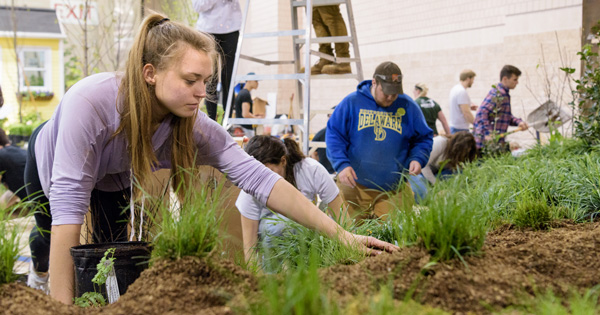
APPLY NOW
Associate Director, CANR Undergraduate Recruitment
Featured Video
YouTube video linkNew UD students take landscape architecture excursion: youtube.com/watch?v=Gpk10NuGsIg
Honors and awards
For the Landscape Architecture student who is dedicated to the education of others. This student gives, and therefore is considered selfless in their willingness to help others progress and develop in their skills and knowledge. The recipient of this award has excelled as a teaching assistant.
| Student | Year |
|---|---|
| Jessica Toy | 2021 |
| Alexandra Hubler | 2020 |
| Joshua Gainey | 2019 |
| Christopher Bonura | 2018 |
| Amanda Binning | 2017 |
For the Landscape Architecture third- or fourth-year student who represents (in the UD community and beyond) in upholding the mission of the Landscape Architecture program. This includes being an innovative leader, excelling in courses, and participating in community-based service-learning projects, internships, or study abroad opportunities. This student exhibits diverse perspectives, critical thinking, and creative problem-solving skills required by future leaders in the profession of landscape architecture.
| Student | Year |
|---|---|
| Amy Matusheski | 2021 |
| Olivia Boon | 2020 |
| Christopher Bonura | 2019 |
| Carin Prechtl | 2018 |
For the Landscape Architecture student who maximizes the success of self and others. This student has made significant contributions to the landscape architecture community by demonstrating dedication and improvement through acts of kindness, support, and engagement beyond expectations. This individual is a good citizen, kind and caring peer, and demonstrates a willingness to provide generous support in the studio.
| Student | Year |
|---|---|
| Christopher Fettke von Koeckritz | 2021 |
| Donald (DJ) Bromley | 2020 |
| Amanda Binning | 2019 |
For the Landscape Architecture third- or fourth-year student who not only exhibits academic excellence but also serves as an example of the mission of the Landscape Architecture program. This student will have excelled in the classroom and beyond, whether it is through research, leadership positions, study abroad, or community service.
| Student | Year |
|---|---|
| Leigh Muldrow | 2021 |
| Connor Armstrong | 2020 |
| Emma Ruggiero | 2019 |
| Olivia Kirkpatrick | 2018 |
| Student | Year |
|---|---|
| Alexandra Hubler and Austin Dill | 2021 |
| Erick Jones | 2020 |
| Christopher Bonura | 2019 |
| Margaret Heffernan and Zachariah Jordan | 2018 |
The LAF Olmsted Scholars Program recognizes and supports students with exceptional leadership potential who are using ideas, influence, communication, service, and leadership to advance sustainable design and foster human and societal benefits. The program recognizes one outstanding student from each accredited landscape architecture program in the U.S. and Canada. Students are both honored for past achievements and recognized for their future potential to influence the landscape architecture discipline.
| Student | Year |
|---|---|
| Olivia Boon | 2021 |
Awarded to students who are truly outstanding as measured by our program's long-term standards of excellence. These individuals demonstrate the highest level of academic scholarship and of accomplishments in skills related to the art and technology of landscape architecture and personal qualities and skills of:
- responsiveness and willingness to work with others,
- self-motivation and responsibility, and
- design abilities: exploration, discovery, synthesis, and representation of landscape architecture design.
Nominees, selected by the UD landscape architecture faculty, present to a jury of PA/DE Chapter members of the ASLA.
| 2021 | 2020 |
|---|---|
| Haochen Y Niu - Honor Leigh Muldrow - Honor Donald (DJ) Bromley - Merit Nick Bruce - Merit |
Christopher Bonura Connor Armstrong Olivia Boon |
Additional student honors
William J. Benton Graduate Student Award
Congratulations to Emma Ruggiero who won the 2021 William J. Benton Graduate Student Award at the M.S. level. This prestigious award was established in honor of William J. Benton, former CANR associate dean of research and professor, in recognition of his dedication to graduate education.
Student testimonials
-
Landscape Architecture | Undergraduate Programs | University of Delaware “My internship with the Coastal Resilience Design Studio has been one of the most fast paced and well-rounded learning experiences of my life. I feel much more prepared for academic and professional work having spent my summer with the studio.”
– DJ Bromley, August 2020
-
Landscape Architecture | Undergraduate Programs | University of Delaware “The Coastal Resilience Design Studio internship provides a great opportunity to continue to hone your design skills over the summer while also making a difference in the Delaware communities. You get to work with a great team and make professional connections through reviews of your work with various agencies throughout the state.”
– Joshua Gainey, August 2020
-
Landscape Architecture | Undergraduate Programs | University of Delaware “Working for the Coastal Resilience Design Studio is a golden opportunity in the Landscape Architecture program. It is a completely immersive experience, doing real life design work. The collaborative environment is really open and supportive because we are learning new skills so quickly, we rely on each other heavily for sharing tips and tricks to make our work the best it can be.”
– Leigh Muldrow, August 2020
-
Landscape Architecture | Undergraduate Programs | University of Delaware “The CRDS offers students real world application of the process a landscape architecture studio simulates. The studio allows us (interns) to contribute our creativity through the design process of the projects completed through the team. I've learned and experienced working with a team of architects, engineers and outside decision makers from the beginning to end on projects. My experience with the studio and team has been great and I've learned a lot. I'd recommend to any student in the LA program.”
– Christopher Fettke von Koeckritz, August 2020
-
Landscape Architecture | Undergraduate Programs | University of Delaware “Working with the Coastal Resilience Design Studio as a graduate student has been an incredibly rewarding professional and educational experience. Throughout my time with CRDS, I was able to collaborate in a creative and supportive studio environment to design real solutions for Delaware’s pressing coastal issues. One of my favorite aspects of the studio has been learning from inspiring mentors, industry professionals and community leaders. Taking on a leadership role, I gained confidence in the design process and honed professional communication skills. Importantly to me, the studio provided the opportunity to design creatively for a mission that promotes a strong environmental message.”
– Emma Ruggiero, August 2020

